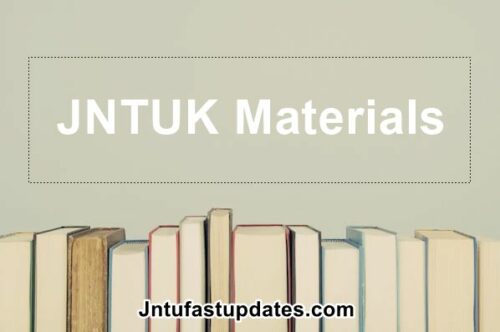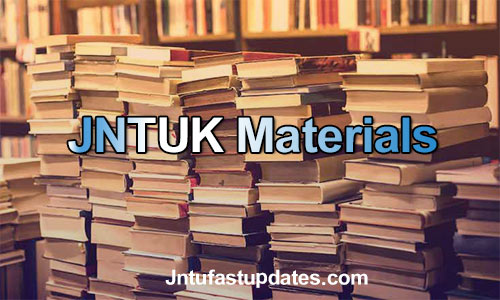JNTUK R16 3-1 Operations Research Material PDF Download
Students those who are studying JNTUK R16 Mechanical Branch, Can Download Unit wise R16 3-1 Operations Research Material/Notes PDFs below.

JNTUK R16 3-1 Operations Research Material PDF Download
OBJECTIVES:
- To learn the importance of Operations Research in the design, planning, scheduling, manufacturing and business applications and to use the various techniques of Operations Research in solving such problems.
UNIT-1
Development – definition– characteristics and phases – types of operation research models – applications. ALLOCATION: Linear programming problem formulation – graphical solution – simplex method – artificial variables techniques -two–phase method, big-M method – duality principle.
UNIT-2
TRANSPORTATION PROBLEM: Formulation – optimal solution, unbalanced transportation problem – degeneracy, assignment problem – formulation – optimal solution – variants of assignment problem- traveling salesman problem. SEQUENCING – Introduction – flow –shop sequencing – n jobs through two machines – n jobs through three machines – job shop sequencing – two jobs through ‘m’ machines.
UNIT-3
REPLACEMENT: Introduction – replacement of items that deteriorate with time – when money value is not counted and counted – replacement of items that fail completely, group replacement.
UNIT-4
THEORY OF GAMES: Introduction – mini. max (max. mini) – criterion and optimal strategy – solution of games with saddle points – rectangular games without saddle points – 2 x 2 games – dominance principle – m x 2 & 2 x n games -graphical method. WAITING LINES: Introduction – single channel – poison arrivals – exponential service times – with infinite population and finite population models– multichannel – poison arrivals – exponential service times with infinite population single channel poison arrivals.
UNIT-5
INVENTORY : Introduction – single item – deterministic models – purchase inventory models with one price break and multiple price breaks – shortages are not allowed – stochastic models – demand may be discrete variable or continuous variable – instantaneous production. Instantaneous demand and continuous demand and no set up cost. ABC & VED Analysis.
Download UNIT-5 Material PDF
UNIT-6
DYNAMIC PROGRAMMING: Introduction – Bellman’s principle of optimality – applications of dynamic programming- capital budgeting problem – shortest path problem – linear programming problem. SIMULATION: Definition – types of simulation models – phases of simulation– applications of simulation – inventory and queuing problems – advantages and disadvantages – simulation languages.
Download UNIT-6 Material PDF
TEXT BOOKS:
- Operations Research-An Introduction/Hamdy A Taha/Pearson publishers
- Operations Research –Theory & publications / S.D.Sharma-Kedarnath/McMillan publishers India Ltd
REFERENCE BOOKS:
- Introduction to O.R/Hiller & Libermann/TMH
- Operations Research /A.M.Natarajan,P.Balasubramani,A. Tamilarasi/Pearson Education.
- Operations Research: Methods & Problems / Maurice Saseini, Arhur Yaspan & Lawrence Friedman/Wiley
- Operations Research / R.Pannerselvam/ PHI Publications.
- Operations Research / Wagner/ PHI Publications.
- Operation Research /J.K.Sharma/MacMilan Publ.
- Operations Research/ Pai/ Oxford Publications
- Operations Research/S Kalavathy / Vikas Publishers
- Operations Research / DS Cheema/University Science Press
- Operations Research / Ravindran, Philips, Solberg / Wiley publishers
OUTCOMES: After completion of the course, the student will be able to:
- To solve the LP and DP problems To solve the Transportation, assignment, game, inventory, replacement, sequencing, queuing problems.

320-x100(1).gif)


